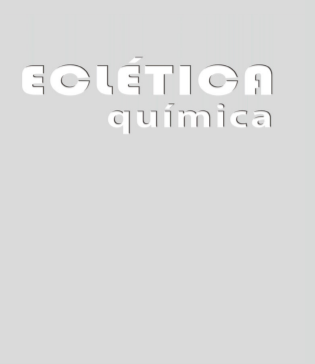Abstract
Maranhão state in Brazil presents a big potential for the cultivation of several oleaginous species, such as babassu, soybean, castor oil plant, etc... These vegetable oils can be transformed into biodiesel by the transesterification reaction in an alkaline medium, using methanol or ethanol. The biodiesel production from a blend of these alcohols is a way of adding the technical and economical advantages of methanol to the environmental advantages of ethanol. The optimized alcohol blend was observed to be a methanol/ethanol volume ratio of 80 % MeOH: 20 % EtOH. The ester content was of 98.70 %, a value higher than the target of the ANP, 96.5 % (m/m), and the biodiesel mass yield was of 95.32 %. This biodiesel fulfills the specifications of moisture, specific gravity, kinematic viscosity and percentages of free alcohols (methanol plus ethanol) and free glycerin.
References
Brazilian Pharmacopoeia, 3rd ed., Organização Andrei Editora, São Paulo, Brazil, 1977, p 406-8.
I.M. Benseñor, São Paulo Med. J., 119 (2001) 190.
H. Ergün, D. A. C. Frattarelli and J. Aranda, J. Pharmaceut. Biomed., 35 (2004) 479.
P. Danielli, and M.B Leal, Rev. Bras. Farm., 84 (2003) 17.
Y. Bentur, and O. Cohen, J. Toxicol.-Clin. Toxic., 42 (2004) 261.
S. C. Pierre, R. Schmidt, C. Brenneis, M. Michaelis, G.nGeisslinger, and K. Scholich, Br. J. Pharmacol., 151 (2007)n494.
G. Suarez-Kurtz , F.M. Ribeiro, R.C.E. Estrela, F.L. Vicente,nand C J. Struchiner, Braz. J. Med. Biol. Res., 34 (2001)n1475.
Brasil, Anvisa, Agência Nacional de Vigilância Sanitária,nRev. Saúde Pública, 38 (2004) 748.
F.G.D. Vieira, J. M. Crubellate, I.G. Silva, and W.R. Silva, RAE eletron.,1 (2002) 1.
H. Senyuva, I. Aksahin, S. Ozcan, and B.V. Kabasakal, Anal. Chim. Acta, 547 (2005)73-7.
K.A. Sakiara, L. Pezza, C. B. Melios, H. R. Pezza, and M. Moraes, Farmaco, 54 (1999) 629.
J. L. F. C. Lima, S. M. O. Sá, J. L. Santos, and E. A. G.nZagatto, J. Pharmaceut. Biomed., 32 (2003)1011.
L. H. Marcolino Jr, R. A. Souza, O. Fatibello Filho, and F.C. Moraes, Anal. Lett., 38 (2005) 2315.
A.V. Pereira, L. Penckowski, M. Vosgerau, and M. F. Sassá, Quím. Nova 25 (2002)553.
A. P. Nascimento, M. G. Trevisan, E. R. M. Kedor-Hackmann, and R. J. Poppi, Anal. Lett., 40 (2007) 975.
J. S. Albuquerque, V. L. Silva, F. Lima, A. Araújo, and M.nC. B. S. M.Montenegro, Anal. Sci., 19 (2003) 692
T. R. L. C. Paixão, C. R. Matos, and M. Bertotti, Talanta, 61 (2003) 725.
E. P. Medeiros, S.L. Castro, F. M. Formiga, S. R. B. Santos, M. C. U. Araújo, and V. B. Nascimento, Microchem. J., 78 (2004) 91.
L. H. Marcolino Jr, V. G. Bonifácio, and O. FatibellonFilho, Quím. Nova, 28 (2005) 783.
M. F. S Teixeira, L. H. Marcolino Jr., O. Fatibello Filho,nE. R. Dockal, and E. T. G. Cavalheiro, J. Braz. Chem. Soc., 15 (2004) 803.
P. L.Weinert, L. Pezza, and H.R. Pezza, J. Braz. Chem. Soc., 18 (2007) 846
F. Feigl, Spot Tests in Organic Analysis, 7th ed., Elsevier, Amsterdan, 1966, p. 434-36 and 635.
L. Pezza, M. Tubino, C. B. Melios, and H. R. Pezza, Anal. Sci., 16 (2000) 313.
K. Eckschlager, Errors, Measurement and Results in Chemical Analysis, Van Nostrand Reinhold Company, London, 1972, p. 109-120.
P. Karrer, Organic Chemistry, 4th ed.; Wiley, New York, 1950, p. 798.
P. E. Georghiou, and C.K. Ho, Can. J. Chem., 67 (1989) 871.

This work is licensed under a Creative Commons Attribution 4.0 International License.
Copyright (c) 2018 Eclética Química Journal





